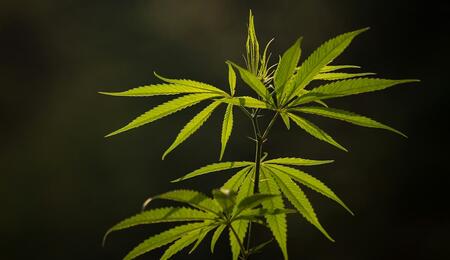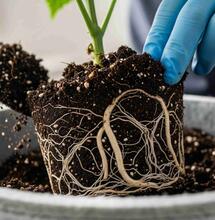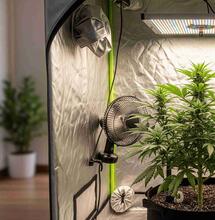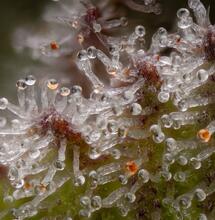Don't Get Complacent!

When you are new at something, you make mistakes - it is a fact of life. You learn to drive; you dent a few bumpers. You learn to grow; you kill a few plants. We have all been there. As you develop your skills, it is easy to get complacent. You don't check your spelling. You don't check your mirrors as frequently. You don't check the basics when in your grow room. Be careful, because one day this over-confidence will catch you out.
When you have been growing for a good few years, you are likely to have your watering and feeding dialed-in. You probably know how to deal with different kinds of pests, and you can spot the signs of a micro-nutrient deficiency at twenty paces! However, do not forget the simple stuff. Here are a few tips that even the most experienced grower should remember.
1. Check Your Levels
One of the biggest mistakes an over-confident grower will make is to stop checking their pH and nutrient strength levels, even when mixing up a fresh batch of nutrients. It is easy to think that, if you keep all variables the same for each grow - the room, lights, nutrient, media and strain - that there will be no fluctuations. However, this overlooks two important factors. The first is that the pH and background EC of your tap water can change over time, so this needs to be measured and monitored. The second - and most important - issue is that plants are living things and constantly changing, and are therefore unpredictable.
On the subject of measuring: you should clean and calibrate your meters frequently. Check the manufacturer's recommendations on how often to calibrate your meters and which calibration solution to use. If you are going to use a tool for a job, it might as well be working!
2. Upscale Effectively
If you have been growing for a while, you will probably want to upscale your operation by eventually adding a couple of extra lights (or a couple of extra rooms!) in order to stash some surplus bud in your jars. The over-confident grower can make the mistake of forgetting that increasing the size of your grow means you increase the size of your workload. If you normally grow twenty-five plants and decide to start a fifty-plant grow, aiming to receive double the yield, you should expect to double the amount of time you spend maintaining your plants. If you do not put in the extra time, then your plants will not reach their full potential, and you will not receive anywhere near the yield you are looking for.
It is certainly possible to reduce some of your workload when you upscale. For example, purchasing a hydro system that keeps your plants watered for you is much more time-efficient than watering by hand. However, for most plant maintenance jobs (transplanting, topping, pruning and training), you need to be prepared to put in the extra work.
3. Keep Your Equipment Maintained
Have you ever heard the phrase 'A good workman never blames his tools'? Keep it in mind when you are performing your maintenance checks before starting a new grow. You do not want to be the grower complaining about being low on yield because your bulbs were too old! Have a checklist in your head of what needs to be done before your plants go in, and stick to it.
Replace your bulbs every-other grow and do not touch them with your skin - the oils can damage the glass. Polish your reflectors and keep them clean throughout the grow; this will ensure that they direct the maximum amount of light towards your plants. Do not spray any liquids - pesticides or foliar feeds - onto or around hot bulbs, as this can weaken the glass and cause them to shatter.
Also, clean your filters: replace the dust sleeves after every grow. The cleaner the filter is, the less pressure it will put on your fan. It is also a good idea to check that there are no leaks in your ventilation system and that all the 'joins' are properly clamped or sealed up with tape.
4. Change One Thing at a Time
Whether you are growing for yourself or to pay the bills, it is always tempting to try something new in the pursuit of higher yields or improved quality. Most good grow shops offer an impressive display of products, including nutrient ranges, growing media, lamps and reflectors. Decent grow shop owners are enthusiastic about what they are selling and should be happy to talk you through the details of how to use the products.
It is always fun to return home with a new toy and try it out. Just remember, you can only properly evaluate the effect of changing one of the variables in your garden if everything else stays the same. For example, imagine that you buy some new lights and a new line of nutrients and receive a better yield than with previous grows. Was it the light or the nutes? And are you going to swap one of them back to find out which one it was?
Lots of good growers get stuck using certain products because they do not know exactly which product is helping them achieve their yields. Then, they will not try anything new because they do not want to risk the yields that they are now achieving. Do not get stuck in a rut!
5. Plan Ahead
It is important to think in advance, and plan accordingly. How will the weather change throughout your grow? Will you be dealing with extra heat or falling temperatures? Factor this in from the start.
In the later part of the year, many growers will plan to start a crop in September, ensuring a nice harvest for Christmas. Take some time off to visit family and friends, and then start up again in the New Year - it is not so easy to ask the neighbors to stop by and water your plants if you are going away for a week!
Happy growing!
Read more from Soft Secrets:







